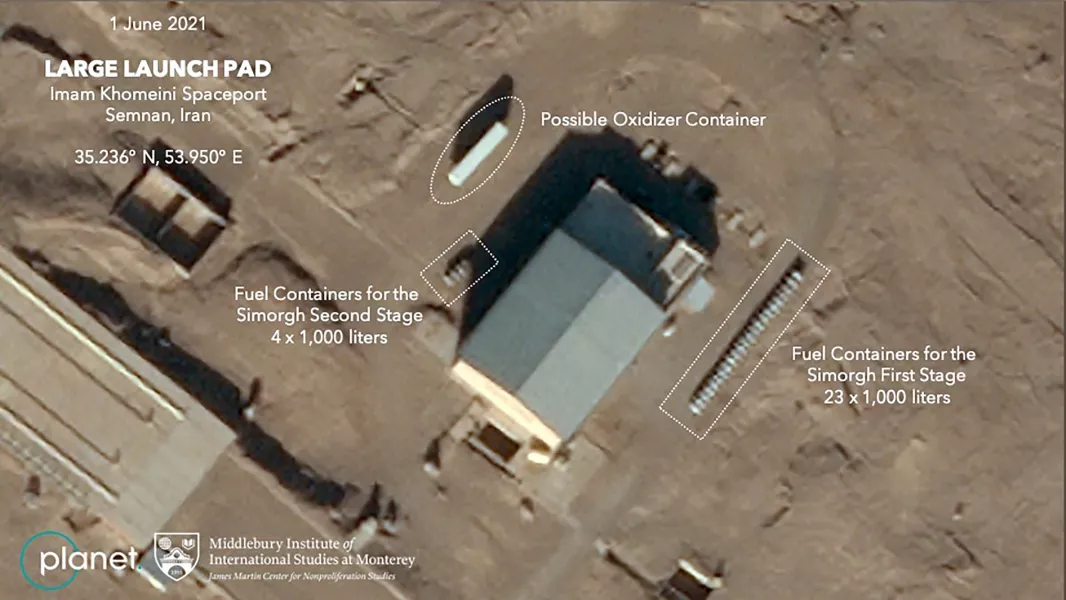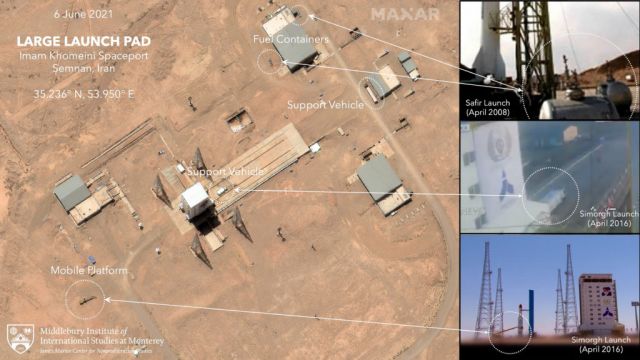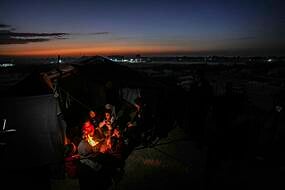Iran is thought to have conducted a failed launch of a satellite-carrying rocket in recent days and appears to be preparing to try again.
It is the country’s latest effort to advance its space programme amid tensions with the West over its tattered nuclear deal.
The failed launch earlier this month, at the Imam Khomeini Spaceport in Iran’s Semnan province, is confirmed by satellite images, a US official and a rocket expert.
The attempt comes as Iran’s space programme has suffered a series of high-profile losses, while its paramilitary Revolutionary Guard runs its own parallel program that launched a satellite into orbit last year.

Iran’s telecommunications minister Mohammad Javad Azari Jahromi denied on Wednesday that Tehran had a failed satellite launch, but offered no explanation for the activity at the spaceport.
Iran’s mission to the United Nations did not immediately respond to a request for comment early on Wednesday.
Satellite photos from Planet Labs and Maxar Technologies show preparations at the spaceport on June 6.
These images include what appears to be fuel tanks alongside a massive white gantry that houses a rocket, while scientists fuel it and prepare for launch. Before the launch, workers tow the gantry away to expose the rocket.
The number of fuel tanks, based on their size, appear to have been enough to fill the first and second stages of an Iranian Simorgh rocket, Jeffrey Lewis, an expert at the James Martin Centre for Nonproliferation Studies at the Middlebury Institute of International Studies, said.
The Simorgh is a satellite-carrying rocket that has been launched from that same area of the spaceport, he said.
Later satellite images on June 17 showed a decrease in activity at the site, and Mr Lewis said analysts believe Iran launched the rocket at some point in that window.
Mr Lewis said: “Nothing had blown up. There wasn’t a giant stain — like they had dumped the fuel — and the vehicles had kind of just moved around.
“The overall level of activity at the site was much lower. So to our mind, that looked like a launch.”
American broadcaster CNN, which first reported on the failed launch, quoted Pentagon spokesman Lieutenant Colonel Uriah Orland saying that “US Space Command is aware of the Iranian rocket launch failure which occurred early June 12”.
It was not immediately clear why Iran would have picked June 12 for a launch, as Tehran typically schedules such events for national commemorations.
But it did come in the run-up to Iran’s presidential election last week, in which the Islamic Republic had hoped to boost turnout.
A new satellite image from Planet Labs on Sunday showed renewed activity at the site.

The image showed a mobile platform previously used to secure a Simorgh rocket at the gantry, a support vehicle seen at previous launches and a new line of fuel containers lined up at the site.
Mr Lewis said the equipment suggested that another launch was imminent.
Iran has sent several short-lived satellites into orbit over the past decade, and in 2013 it launched a monkey into space.
But the programme has experienced troubles recently. A failed launch this month would be the fourth in a row for the Simorgh programme. A separate fire at the Imam Khomeini Spaceport in February 2019 also killed three researchers, authorities said at the time.
The launch comes after the landslide election of Iranian president-elect Ebrahim Raisi, the country’s hard-line judiciary chief tied to the mass execution of thousands in 1988. The vote saw the lowest turnout in a presidential election since Iran’s 1979 Islamic Revolution.
The US has alleged such satellite launches defy a UN Security Council resolution and called on Iran to undertake no activity related to ballistic missiles capable of delivering nuclear weapons.
Iran, which has long said it does not seek nuclear weapons, previously maintained that its satellite launches and rocket tests did not have a military component.







